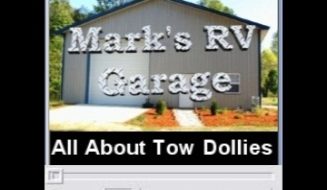As the final post in my series, Tow Cars and Towables, I wrap up my tips related to towing a car. By following these tips, along with those given in Parts 1 and 2, you’ll find that towing can be very rewarding, and even save gas!
- When towing a car, follow the car manufacturer’s instructions. Sometimes you must stop at a rest area every 200 or so miles, start the engine, put it in gear in order to circulate the oil, and let it run a while. Also you may have a speed limit for towing your car such as 55 miles per hour. Some newer cars do not have these same limitations-you may drive 65 miles per hour and do not have to start the engine to circulate the oil.
- Take a test drive of your motorhome with the tow car attached before your trip. While you’re out, use the nearest truck scale to be sure the combined weight of the tow car and the motorhome does not exceed the gross combined vehicle weight (GCVW) recommended by your coach’s manufacturer.
- To hook up a tow car,
|
- Towing a car will actually save gas, since you won’t be using the motorhome for shorter trips.
- Believe it or not, you’ll soon forget the tow car is there except when you’re passing, parking, stopping quickly, or turning sharply. When passing, make sure both the motorhome and the tow car are completely clear before going back to your lane. When you pull into a rest area or parking lot, allow for the added length of the tow car.
Happy Towing!
Bernice Beard
